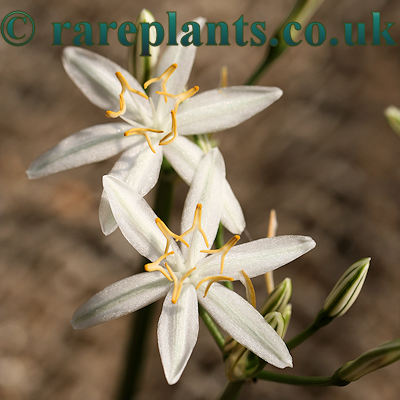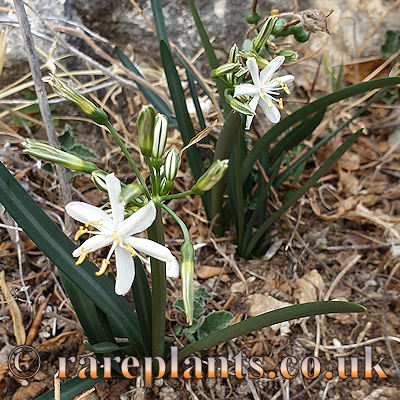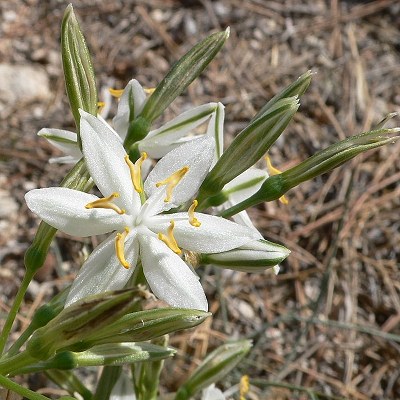Description
A miniature distinct, isolated, monotypic Amaryllid from the south of Spain. In the wild it grows in rock crevices and at the bases of cliffs in a small region of the south east of the country extending north along coastal areas to at least Valencia, perhaps further. It is also reported from Morocco. A lovely autumn flowering bulb, which is little-seen but much appreciated when it is.
Lapiedra makes several strappy leaves up to about 1cm broad with a rounded tip and a very characteristic, central silver stripe, and then, in early to late autumn (depending when it first gets water) a 10-15cm stem appears carrying several pure white, glistening flowers with wide flat petals, these are made in succession on short stems. Flowering can be between July (exceptionally) and November. In fact we have had both flowers and ripe seed present, on different plants, at the same time. Rounded seed pods, holding round, shiny, black seeds follow flowering quite quickly.
Hardy and happy outside here (so far). It will need a dry summer rest, or grow it in a pot under glass where it will dry out anyway. A well-drained, loam-based soil is perfect. Do ensure good drainage. A word however about the summer rest; the temptation is to look at wild habitat photograph or ascertain rainfall figures for a locality and think that the plant will get very little rain, and perhaps a very hot, dry and prolonged bake in summer. Deeper investigation reveals that in fact it grows in crevices in, and at the bases of, limestone cliffs where there will always be a trace of moisture present throughout even the most prolonged of droughts. This will ensure that the externally well-insulated, black-coated bulbs do not desiccate and this is what you should aim for in cultivation also. The bulbs leaf up and are developed and developing along with the flower spikes which are made from September to November here, (though the bulbs can safely be moved in leaf). Growth is easy though the leaves will die away on you, naturally, in April-May. We do find it grows better if not disturbed and not repotted annually, but left in the soil or compost for a few seasons.




